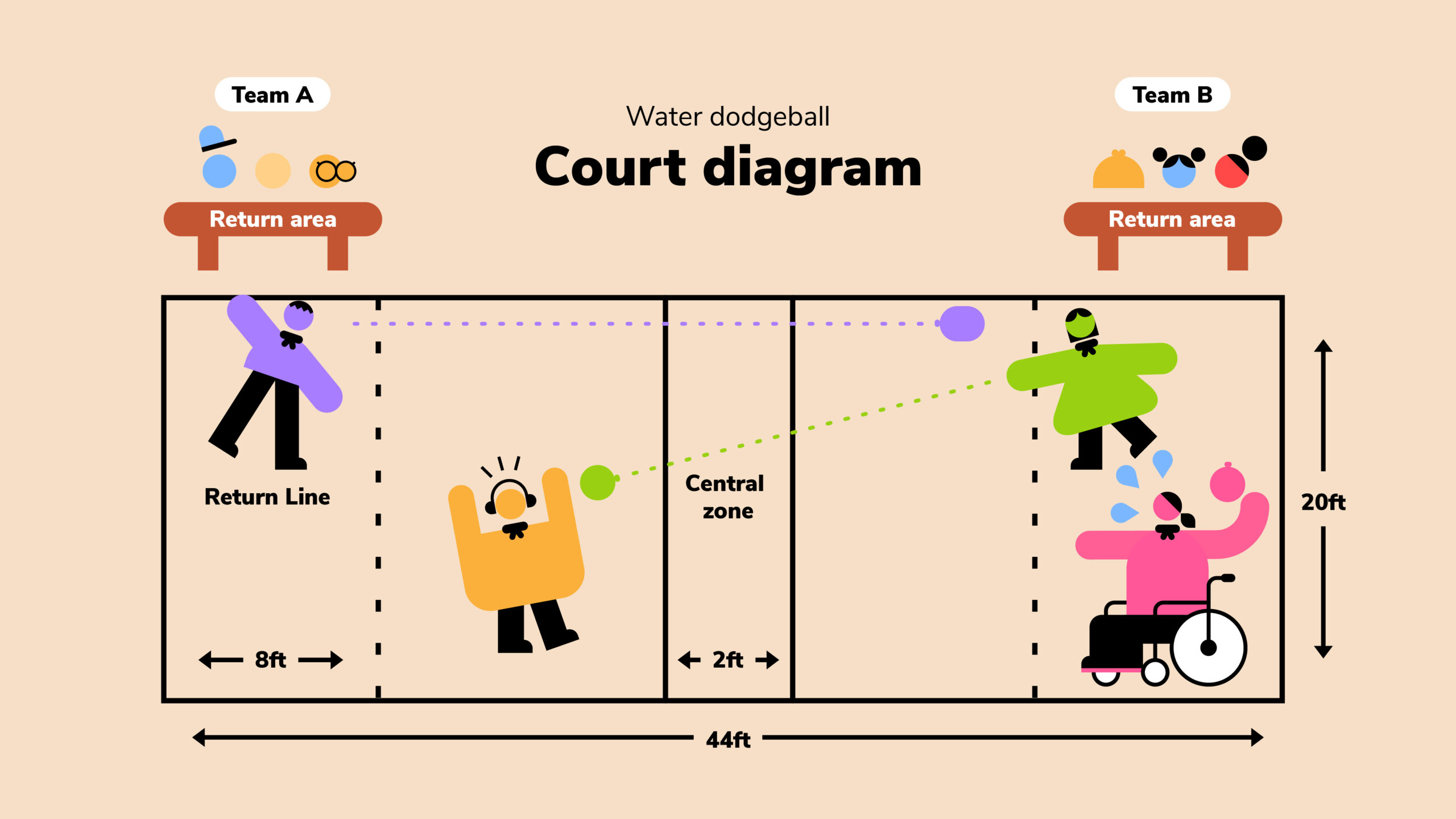Dodgeball is such an exciting, energetic game that can be played indoors and outdoors; however, the environment dramatically differs from the gameplay. For schools, recreational leagues, and PE teachers, learning such differences may serve for proper planning and adaptation of the game in each environment. In this article, we will discuss the most essential differences between playing indoor and outdoor dodgeball, with space, surfaces, rules, and some tips for weather conditions.
1. Space and Boundaries
Indoor Dodgeball
Indoor dodgeball typically occurs in a gymnasium with a relatively confined space. This confined space with clear delineated lines clearly sets up the boundaries, which tends to make it easier for players to be in control of the game’s pace. With such a relatively confined area, the gameplay is usually fast-paced and highly intense, with players often in close contact with each other.
Outdoor Dodgeball
For comparison, outdoor dodgeball is played on larger fields, such as grass or turf. Without walls, boundaries are marked with cones or other markers. This additional space allows players to spread out, adding a strategic element to dodging and maneuvering. However, the larger area might make it difficult to involve all players, as it may be hard to see them as they are distant from the action.
2. How the Surface Affects the Game
Indoor Surfaces
In most cases, indoor dodgeball is played on smooth surfaces like hardwood or rubberized gym floors. Such surfaces can provide high ball speeds and consistent bounces for a very fast game. However, the slippery surface makes injury possible through slips and falls, requiring proper shoes for good grip.
Outdoor Surfaces
Outdoor dodgeball is commonly played outdoors on grass or artificial turf. While such surfaces may slow down the game and provide unpredictable bounces, they do provide a softer landing for players. Players should be well-prepared in cleats or athletic shoes with good grip, especially in slippery terrain—wet ones, of course.
3. Rule Adjustments for Indoor and Outdoor Play
Adjustment for Indoor Play
- Boundaries: The walls define the limits of the playfield. Sometimes balls shoot out of the boundaries by hitting walls
- Ball Retrieval: Balls shooting out of walls can easily be retrieved, and the game is not brought to a standstill.
- Threw-out Rules: In consideration of injuries, in cramped space, players should throw below the waist.
Outdoor Modifications of Play
- Boundary which is Large: There should be obvious boundary lines so that the children are not perplexed at the large size of the playing area.
- Weather Conditions: Ball trajectory can be influenced by wind; the ballers have to alter their throws in that event.
- Recovering the Ball: More balls or a retrievable ball could help during the game maintain the speed without much waste in case the ball goes out of bounds far.
4. Tips for Playing in Different Weather Conditions
Hot Weather Hydrate players by taking regular water breaks and playing during cooler times.
- Raining Grounds: Slippery wet grounds. The game play would be slow for the players to use shoes that grip also. Overhand throws would be strictly prohibited not to hurt the players.
- Cold or Windy Conditions: The warm-up is highly necessary in cold weather. Ball trajectory may drop due to the blows of the winds, and thus the player needs to aim lower or at an angle. A heavier ball may be more controllable under windy conditions.
5. Conclusion: Advantages and Disadvantages of Each Environment
Pros of Indoor Dodgeball
- The ball bounce is always regular and fast.
- The game is highly moving and action-filled.
- It is easy to pick the ball as it does not stop or lose momentum.
Cons of Indoor Dodgeball
- There is a high chance of overcrowding.
- Falls increase injuries because of hard-surfaced surroundings.
Pros of Outdoor Dodgeball
- They have enough space in which they can plan their movements.
- Fresh air in the outside environment helps them relax.
- Soft flooring in a grassy environment lessens the impact of injuries.
Cons of Outdoor Dodgeball
- The weather may interrupt the game.
- Harder to pick balls when they go out of bounds.
- Jarring bounces and trip hazards on uneven ground.
Conclusion
Playing indoors and outdoors are two completely different styles, each with its own challenges. Knowing these key differences can guide the right adjustments so that the game can be safe and fun, indoors or outdoors.




